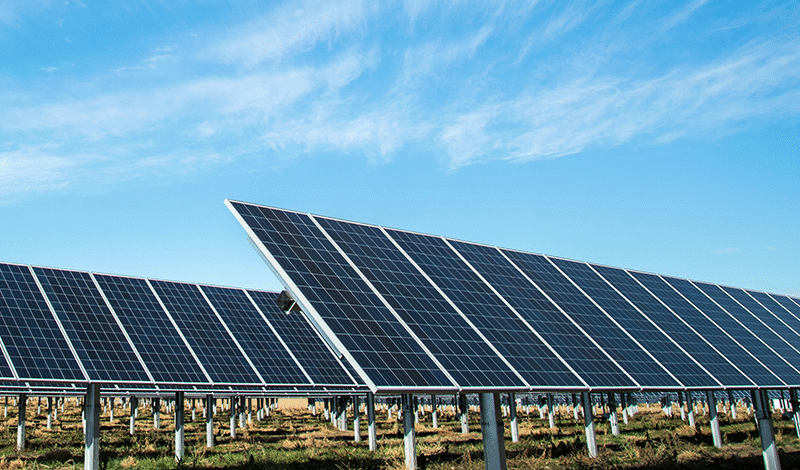
The New Energy Revolution: Reshaping the Future Energy Landscape and Addressing Challenges
Under the dual pressures of global warming and energy security, new energy has evolved from an alternative option to a dominant force shaping the future energy landscape. Compared to traditional fossil fuels, new energy represents not merely a shift in energy forms, but a profound transformation spanning technology, economics, and society.
I. Diversified Development of New Energy Systems
The modern new energy system exhibits remarkable diversity:
Continuous breakthroughs in solar technology: Beyond conventional photovoltaic (PV) power generation, perovskite solar cells have achieved efficiencies exceeding 30%, while concentrated solar power (CSP) enables 24-hour continuous electricity supply. Building-integrated photovoltaics (BIPV) are reshaping urban energy infrastructures.
Intelligent advancements in wind energy: Offshore wind turbines now boast single-unit capacities surpassing 15MW, and floating wind technology is unlocking deep-sea resources. AI-assisted wind farm optimization systems can enhance power generation efficiency by 20%.
Innovative applications of hydropower: Small modular hydropower systems enable low-impact development, tidal energy forecasting accuracy exceeds 90%, and emerging osmotic power technology is pioneering new pathways for marine energy utilization.
Upgrades in biomass energy: Third-generation biofuels have overcome the “food vs. fuel” dilemma, with algae-based biomass achieving conversion efficiencies ten times higher than traditional crops.
Deep exploitation of geothermal energy: Enhanced geothermal systems (EGS) have broken through geographical limitations, with mid-to-deep geothermal utilization efficiency increasing by 300%.
II. Reconstructing the Composite Value of New Energy
Environmental impact: Global deployment of new energy reduces CO₂ emissions by approximately 12 billion tons annually, equivalent to 35% of total industrial emissions. The carbon footprint of PV panels over their lifecycle has decreased by 70% compared to a decade ago.
Economic benefits: The cost of wind and solar power has fallen below that of fossil fuels, with global new energy investments exceeding $500 billion for the first time in 2023. Distributed energy is fostering new models of “energy democracy.”
Social benefits: The new energy industry has created over 65 million jobs, providing leapfrog development opportunities for energy-poor regions.
III. Systemic Challenges and Pathways to Breakthroughs
Technological bottlenecks: Key areas requiring breakthroughs include high-density energy storage (solid-state batteries, flow batteries), smart microgrids, and hydrogen storage and transportation. Digital twin technology can improve new energy system reliability by over 15%.
Economic barriers: Establishing green financial systems and innovating power purchase agreement (PPA) models can reduce financing costs. Global infrastructure investment needs to increase by $1.7 trillion annually.
Policy coordination: Carbon pricing mechanisms should cover over 85% of emission sources, and grid reforms must accommodate high penetration of renewable energy.
Resource constraints: Advancing circular economy technologies is critical—PV panel recycling rates must rise from the current 15% to 95%, while smart water management could reduce biomass water consumption by 40%.
IV. Outlook for the Future Energy Ecosystem
Integrated multi-energy systems: Wind-solar-storage-hydrogen hybrid projects will become standard, while virtual power plants aggregate distributed resources to participate in electricity markets.
Digital empowerment: Blockchain enables traceability of green certificates, and AI optimizes overall system dispatch efficiency.
Cross-sector convergence: Deep integration with transportation, construction, and agriculture will create new industrial paradigms.
Global governance: Establishing mechanisms for new energy technology transfer, narrowing the North-South development gap, and forming equitable carbon responsibility-sharing systems are essential.
This energy revolution is reshaping the global industrial landscape. According to the International Energy Agency (IEA), new energy could meet over 80% of electricity demand by 2050. Achieving this transition requires synergistic efforts in technological innovation, policy guidance, and market mechanisms, along with deep global cooperation. New energy is not merely a replacement for traditional energy forms but a critical foundation for the sustainable development of human civilization. Its ultimate goal is to build a clean, secure, and inclusive energy future.
